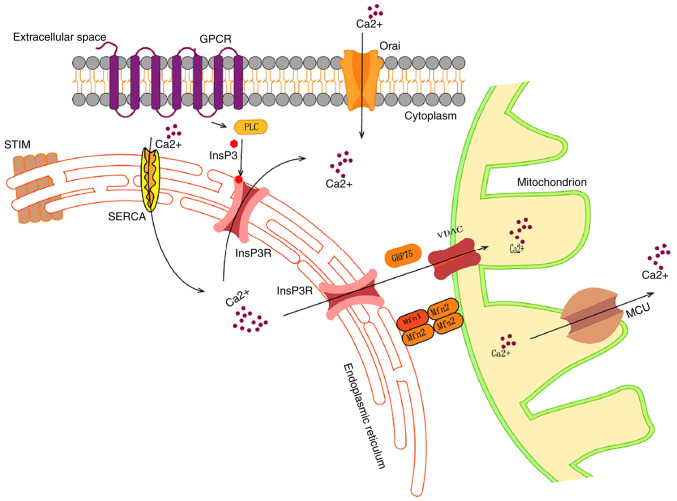Figure 1.
Schematic of intracellular Ca2+ flow. When GPCRs are activated, the action of PLCs leads to the formation of InsP3. Binding to the InsP3R triggers the release of Ca2+ from the ER to the cytoplasm. Subsequent isolation of Ca2+ from the STIM protein leads to its interaction with Orai, which allows Ca2+ to enter the cell from the extracellular space. Furthermore, cytoplasmic Ca2+ is absorbed into the ER via SERCA activity. The ER and mitochondria function via MAMs, whereby the chaperone molecule GRP75 connects InsP3R and VDAC, which allows Ca2+ to be transported from the ER to the mitochondria. Tethering proteins Mfn1/2 regulate the stability of MAM. Ca2+ enters the mitochondrial matrix via the MCU complex of the inner mitochondrial membrane. Ca2+, calcium; GPCR, G-protein-coupled receptor; PLC, phospholipase C; InsP3, inositol triphosphate; InsP3R, InsP3 receptor; ER, endoplasmic reticulum; STIM, stromal interaction molecule; Orai, Orai calcium release-activated calcium modulator; SERCA, sarco/ER Ca2+ ATPase; MAM, mitochondria-associated membrane; GRP75, glucose-regulated protein 75; VDAC, voltage-dependent anion channel; Mfn1/2, mitofusin 1/2; MCU, mitochondrial Ca2+ uniporter.

